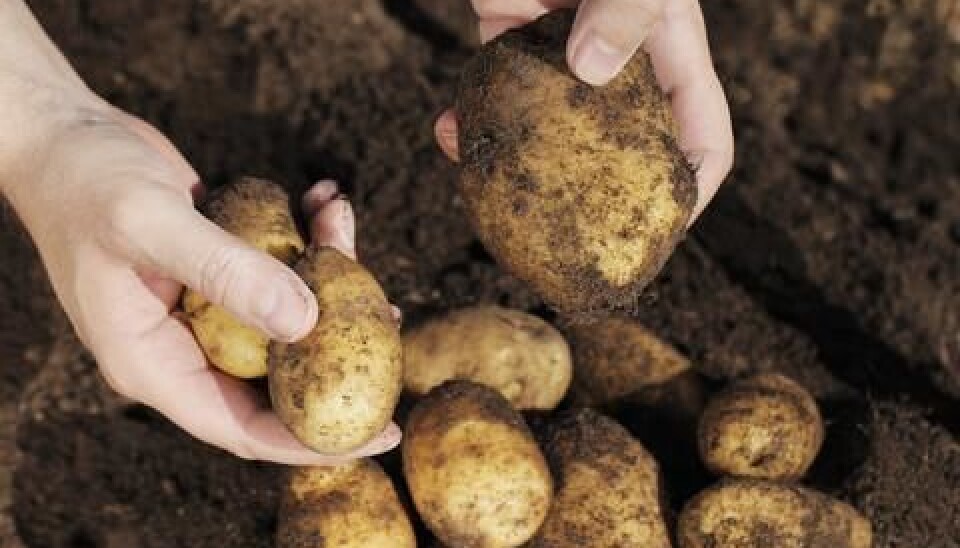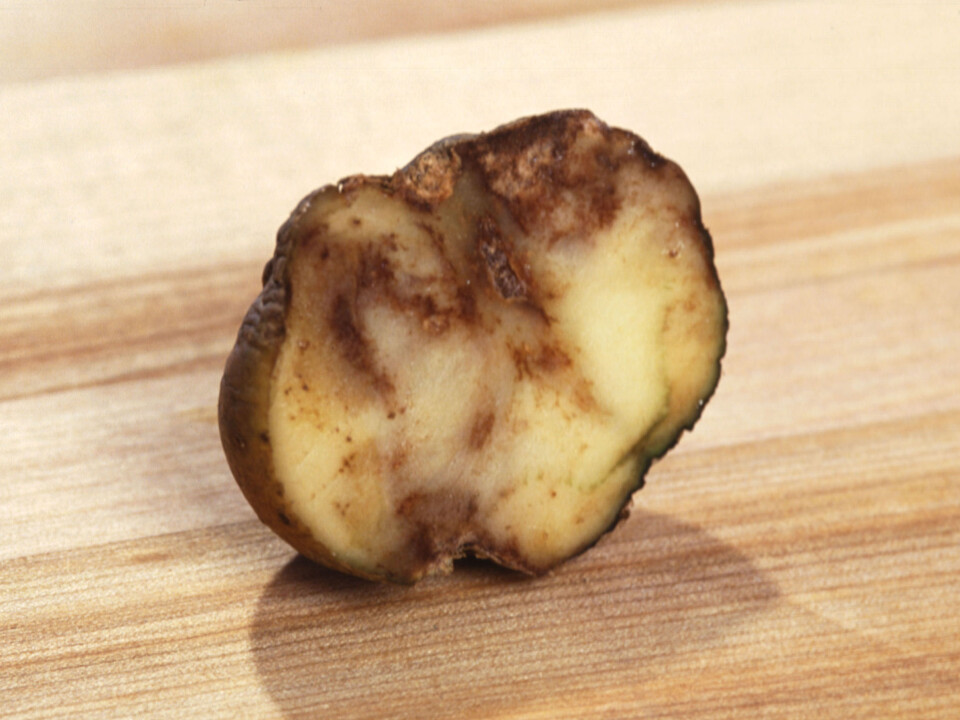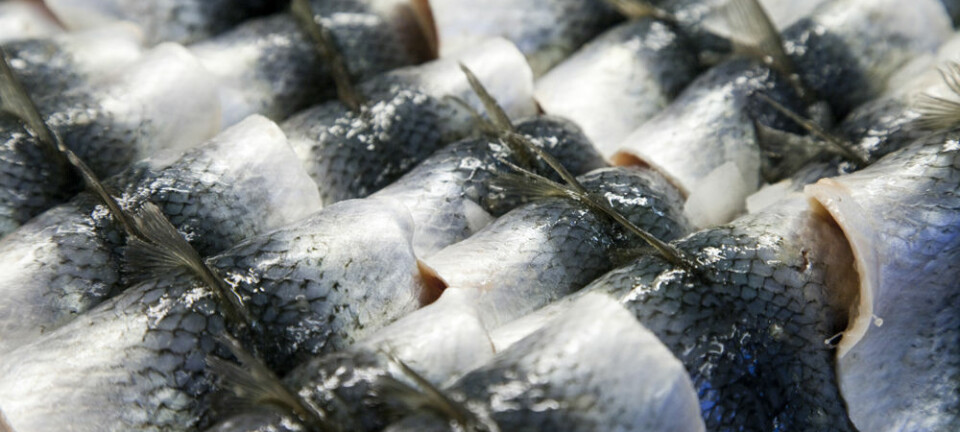
Potato famine genome secrets unlocked
Using historical botanical collections, scientists have unlocked the genetic code of potato blight – the disease behind the great Irish Potato Famine. New study shows what made the potato famine so ruthlessly dangerous and why it’s still costing billions to fight it.
Phytophthora infestans, the dreaded microorganism behind the great Irish Potato Famine in 1845-52, killed up to a million Irish people and sent another million fleeing their country.
A Danish-led international research group has now sequenced the genome of the the Phytophthora infestans, using historical samples dating back to 1845 to figure out exactly what kind of disease it caused and what it is that still makes it so dangerous.
An annual $6-7 billion dollars is spent on fighting the disease, known as late blight, or potato blight.
Disease led to famine and exodus
Study co-author Tom Gilberg of the Centre of GeoGenetics at the University of Copenhagen has been studying the history behind the potato famine for many years. In fact, ever since he came across an article by Jean Ristaino from 2001, which showed that the genetic material of the disease had managed to survive in dried leaves and potatoes in 19th century botanical collections.
“This was constantly lurking at the back of my mind, and with the new developments in genome sequencing, I thought ‘Why not take another look at Jean Ristaino’s old data and maybe we can figure out what actually happened?’,” says Gilbert.

Historically, we know that the potato blight spread incredibly quickly via spores in the wind and reached most of Europe after only a few months. Nothing like this had ever been seen before – not even the Black Death in the Middle Ages was as forceful and destructive – as farmers everywhere were picking up spongy, black and smelly potatoes.
All of Europe suffered, but the Irish were particularly badly affected because the potato was the only crop that the British colonial policy would allow them to keep. In the Irish harvest of 1845, between one-third and half of the potato crop was destroyed by the disease, and the following year, almost the entire crop was lost. Famine and exodus ensued.
It all started in America in 1843
It has turned out that the potato blight actually originated in America back in 1843. In 1845, it travelled from New York to Belgium on a trade ship. Most researchers have blamed the famine on a special strain of potato blight known as US-1, which dominated globally up to the 1970s.
This was, however, not the strain that Gilbert and his colleagues found.
We’ll never be fully able to beat the potato blight. It has the ability to reinvent itself entirely, and that makes it very difficult to control – just like a cold or a flu, which also develop incredibly quickly.
Together with lead author Mike Martin, who is an expert on plant fossil DNA, Jean Ristaino and other colleagues, Gilbert analysed a variety of dried leaves and potatoes dating back to 1845-1889 stored in botanical archives.
In five samples from Belgium, Denmark, Sweden, the UK and Germany, they found sufficient amounts of DNA from blighted potatoes to sequence the entire genome.
Great variation in early genomes
They found that not only is there another strain different from US-1, there are also several other strains that have evolved over time.
The genomes reveal that the historical blight genomes contain great variation, which is surprising as the blight does not normally spread sexually, i.e. as identical clones.
Gilbert finds it natural to interpret this as if the new disease variants have entered the stage on a continuous basis – probably via seed potatoes, which the desperate European potato farmers had received from America hoping to find a resistant variant.
This shows that the researchers have opened a fascinating window to an arms race between the biology of the disease organism and human ingenuity.
A complex war between resistance and new genes
The team found that the potato blight genomes always vary in a special group of ‘attack genes’ known as RXLR genes. These genes enable the blight to infect plant cells and alter their physiology.
The sequenced genomes allow the scientists to see how individual genes are continuously replaced up through history. They can also see variants of other genes, for instance one called Avr3a, which occurs in both historical and in today’s potato blight.
However, in the historical sample, Avr3a is a harmless gene that doesn’t cause disease, but all the new samples contain a malicious variant that damages the potatoes.
This paints a genetic picture of the underlying drama in which potato farmers have been fighting bravely to grow some resistant plants. Scientists know that the farmers tried to cross blight resistant wild potato species with the cultivated potatoes in order to get some strong resistance genes.
However, the moment the potatoes had become resistant, a new variant of the disease popped up with a new set of ‘attack genes’ ready to once again wipe out the potatoes.
The war cannot be won
The new discovery goes to the core of why the potato blight is such a formidable opponent. Instead of just having one or two genes, the blight has an entire clan of up to 20 genes, all of which can perform the basic function, but in different ways. This is clever, as it can alternate between a half battery of these genes and is capable of constantly retaliating if the potato becomes resistant.
”We’ll never be fully able to beat the potato blight,” says Gilbert.
”It has the ability to reinvent itself entirely, and that makes it very difficult to control – just like a cold or a flu, which also develop incredibly quickly.”
The historical data is invaluable
For Gilbert, the most exciting part of the study is that it demonstrates the importance of historical samples, because they can be used to study in detail the interaction between the hosts. And there are many more such samples lying around just waiting for someone to start examining them.
“The historical data can guide our strategies in the future,” he says.
-----------------------
Read the Danish version of this article at videnskab.dk
Scientific links
- "Reconstructing genome evolution in historic samples of the Irish potato famine pathogen", Nature Communications (2013), DOI: 10.1038/ncomms3172
- "PCR amplification of the Irish potato famine pathogen from historic specimens", Nature (2001), DOI: 10.1038/35079606






